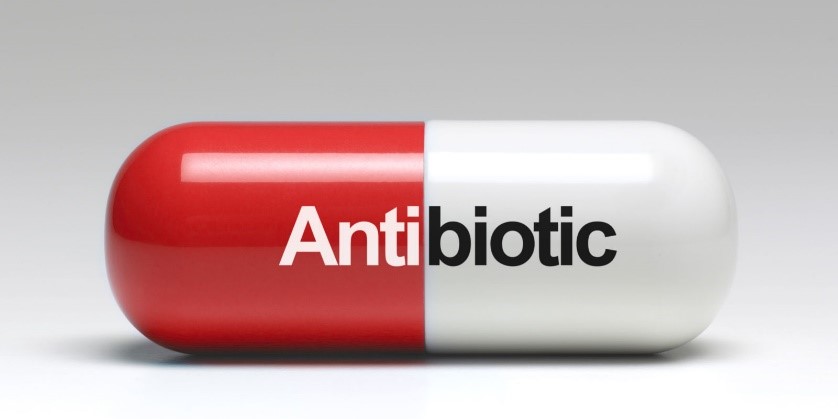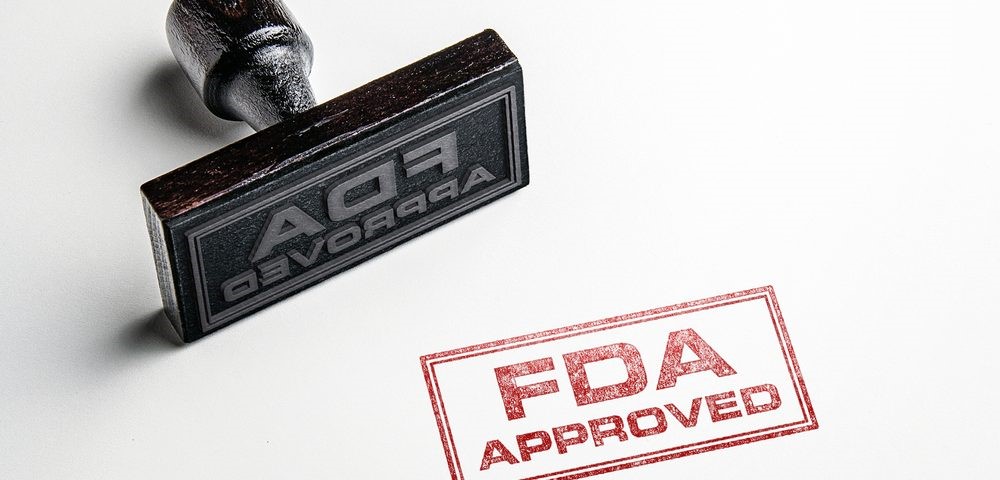
 The remarkable year of 2017 came to a close with several momentous developments, such as FDA’s new draft guidance for biosimilar interchangability, China taking the Big Leap to Expand Healthcare Access, and Novartis’s KYMRIAH™ marking a new era in futuristic medicine to name a few. With the dawning of the new year, the global pharma industry is set to leap forward and conquer more breakthrough innovations, equipped with more strategic partnerships, mergers and acquisitions. Although mainsteam pharma industry has historically been focused on large indications, factors such as regulatory openness, maximizing value realization and business model innovation continues to trigger industry momentum in innovation-led fields of orphan indications and regenerative medicine. With strategic partnerships being a crucial cog in the innovation engine, a fewmajor deals this month have exemplified continuing focus in this direction. Sanofi has reinstated its focus on rare diseases, with the acquisition of Bioverativ for a whopping $ 11.6 billion. This development coming at the backdrop of the company’s recent restructuring of rare disease licensing agreement with Alnylam signifies the importance placed by the big pharma player in the field. The quantum of deal value also stands testament to valuation premium garnered by late stage assets as companies race to markets amid extreme competition.
The remarkable year of 2017 came to a close with several momentous developments, such as FDA’s new draft guidance for biosimilar interchangability, China taking the Big Leap to Expand Healthcare Access, and Novartis’s KYMRIAH™ marking a new era in futuristic medicine to name a few. With the dawning of the new year, the global pharma industry is set to leap forward and conquer more breakthrough innovations, equipped with more strategic partnerships, mergers and acquisitions. Although mainsteam pharma industry has historically been focused on large indications, factors such as regulatory openness, maximizing value realization and business model innovation continues to trigger industry momentum in innovation-led fields of orphan indications and regenerative medicine. With strategic partnerships being a crucial cog in the innovation engine, a fewmajor deals this month have exemplified continuing focus in this direction. Sanofi has reinstated its focus on rare diseases, with the acquisition of Bioverativ for a whopping $ 11.6 billion. This development coming at the backdrop of the company’s recent restructuring of rare disease licensing agreement with Alnylam signifies the importance placed by the big pharma player in the field. The quantum of deal value also stands testament to valuation premium garnered by late stage assets as companies race to markets amid extreme competition.
With regulatory grounds broken, more big pharma companies are now scrambling to jump on the hot bus for cell and gene therapy, and Celgene’s push for complete acquisition of Juno Therpeutics at an offer price of $ 9 billion is a classic example of the trend. With a lead gene therapy candidate for relapsed or refractory aggressive B-cell non-Hodgkin lymphoma, Juno becomes a strategic fit for Celgene to cushion its fall from the impending patent expiry of its oncology blockbuster Revlimid. Takeda’s acquisition of TiGenix for its validated allogeneic expanded adipose-derived stem cell platform technology is another deal that signifies increasing industry momentum in the frontier field.
 With Novartis’s KYMRIAH™ approval setting the stage for regulatory success of cell therapy, Gilead’s YESCARTA™approval signaling that KYMRIAH™ was nothing but the beginning, Spark Therapeutics’LUXTURNA™ approval brought 2017 to a grand close, clearly resonating that regenerative medicine is no longer just a science, but a tangible reality. More deals this month demonstrate rampant industry activity. Unlike the regular trajectory of pharma/ healthcare innovation, where the technologyinvariably precedes market access considerations and companies come under fire for exorbitant pricing strategies, as is still the case with orphan drugs, it is a welcome change to see companies thinking early on about means to ensure affordable access to the groundbreaking science in regenerative medicine. The forerunner Novartis triggered this thinking with its first of kind outcome-based pricing approach, where the payment was made only after a months’ time if there is a visible performance of the drug. Treading on the leader’s path, Spark Therapeutics has taken the thinking up a notch for LUXTURNA™, with its 3 pronged approach to easing the financial burden for not just the patient but the payer as well. In addition to aperformance-based rebate approach to the payer, Spark is planning to directly enter into purchase agreements with payers and leave them to negotiate appropriate reimbursement terms with treatment centers. Additionally, the company is also charting paths for provision of payment in installments by commercial and government payers.In light of rapidly expanding regenerative medicine approvals, pioneers setting such positive precedents for rethinking models for pricing and reimbursements is a harbinger of hope for the industry. We now hope to see a more multi-stakeholder approach to redesign development, access and pricing models around the world.
With Novartis’s KYMRIAH™ approval setting the stage for regulatory success of cell therapy, Gilead’s YESCARTA™approval signaling that KYMRIAH™ was nothing but the beginning, Spark Therapeutics’LUXTURNA™ approval brought 2017 to a grand close, clearly resonating that regenerative medicine is no longer just a science, but a tangible reality. More deals this month demonstrate rampant industry activity. Unlike the regular trajectory of pharma/ healthcare innovation, where the technologyinvariably precedes market access considerations and companies come under fire for exorbitant pricing strategies, as is still the case with orphan drugs, it is a welcome change to see companies thinking early on about means to ensure affordable access to the groundbreaking science in regenerative medicine. The forerunner Novartis triggered this thinking with its first of kind outcome-based pricing approach, where the payment was made only after a months’ time if there is a visible performance of the drug. Treading on the leader’s path, Spark Therapeutics has taken the thinking up a notch for LUXTURNA™, with its 3 pronged approach to easing the financial burden for not just the patient but the payer as well. In addition to aperformance-based rebate approach to the payer, Spark is planning to directly enter into purchase agreements with payers and leave them to negotiate appropriate reimbursement terms with treatment centers. Additionally, the company is also charting paths for provision of payment in installments by commercial and government payers.In light of rapidly expanding regenerative medicine approvals, pioneers setting such positive precedents for rethinking models for pricing and reimbursements is a harbinger of hope for the industry. We now hope to see a more multi-stakeholder approach to redesign development, access and pricing models around the world.  Even as the pharma industry is steering away from opioids and narcotic drugs, at the other end, there is renewed interest in exploring cannabis as a drug with wide-ranging possibilities. While the, tetrahydrocannabinol (THC) is responsible for thehabit-forming and psychoactive properties, the weed’s cannabidiol component has exceptional medicinal properties. Growing regulatory acceptance is evident from the fact that medicinal usage of cannabis is now allowed in 26 US states, and all provinces in Canada. Naturally, there is a large spurt of pharma industry activity surrounding Cannabis. A budding M&A landscape is also shaping up in this field, expecially in Canada, with companies vying for early consolidation opportunities. Canadian firm Aurora Canabis acquired CanniMed Inc after a long battle that ensued from the attempted hostile takeoverbid back in November after CanniMed rejected a $24 a share offer from Aurora. CanniMed, a pioneer in the country and the first licensed competitor in Canada, has been fighting tooth and nail to push Aurora for a better deal and finally the much anticipated deal closed at $ 1.1 billion in cash and stock this month. Aphira Inc., another canadian competitor also announced acquisition of Vancouver Island based Coast Cannabis Inc.at a deal valued $ 230 million. At the other end of the world, Australian pharma company Zelda Therapeutics has announced listing on NY’s OTCQB Venture Market. The move is a precursor to a larger fund raising round deliberated by the company after achieving planned milestones in 2018. Growing business momentum around medicinal cannabis is also proliferating to other developing parts of the world. With cultivation of cannabis now legalized in certain Indian states,this is surely a trend to be closely monitored and an opportunity to strategically plan for.
Even as the pharma industry is steering away from opioids and narcotic drugs, at the other end, there is renewed interest in exploring cannabis as a drug with wide-ranging possibilities. While the, tetrahydrocannabinol (THC) is responsible for thehabit-forming and psychoactive properties, the weed’s cannabidiol component has exceptional medicinal properties. Growing regulatory acceptance is evident from the fact that medicinal usage of cannabis is now allowed in 26 US states, and all provinces in Canada. Naturally, there is a large spurt of pharma industry activity surrounding Cannabis. A budding M&A landscape is also shaping up in this field, expecially in Canada, with companies vying for early consolidation opportunities. Canadian firm Aurora Canabis acquired CanniMed Inc after a long battle that ensued from the attempted hostile takeoverbid back in November after CanniMed rejected a $24 a share offer from Aurora. CanniMed, a pioneer in the country and the first licensed competitor in Canada, has been fighting tooth and nail to push Aurora for a better deal and finally the much anticipated deal closed at $ 1.1 billion in cash and stock this month. Aphira Inc., another canadian competitor also announced acquisition of Vancouver Island based Coast Cannabis Inc.at a deal valued $ 230 million. At the other end of the world, Australian pharma company Zelda Therapeutics has announced listing on NY’s OTCQB Venture Market. The move is a precursor to a larger fund raising round deliberated by the company after achieving planned milestones in 2018. Growing business momentum around medicinal cannabis is also proliferating to other developing parts of the world. With cultivation of cannabis now legalized in certain Indian states,this is surely a trend to be closely monitored and an opportunity to strategically plan for. US bases antibiotics maker Melinta Therapeutics has completed acquisition of the infectious diseases portfolio of The Medicines Company, comprising of 3 commercialized products – vaborbactam/meropenem, oritavancin and minocycline. The acquisition has elevated the combined peak market potential of Melinta’s current portfolio to over $ 1 billion. Like many pure-play anti-infective companies, Melinta toohas had a shaky beginning, with having to wait more than a decade to reach markets with its lead candidate delafloxacin, a fluoroquinolone effective against both gram positive and gram negative bacteria. A merger with US based Cempra post first FDA approval allowed the company to not just bolster its balance sheet, but also enabled a much expanded anti-infectives portfolio. The recent asset acquisition from The Medicines Company has furthered its road to redemption, serving as a ray of hope for other aspiring pure-play antibiotics players, in light of the troubled market landscape where the paths to markets remain steep and financining clinical milestones remain a looming concern.The high cost of clinical trials coupled with lack of funding appetite creates a paradox situation in anti-infectives, increasingly pushing companies away from pursuing new molecules. With ongoing debates surrounding anti-micrbial resistance adding fuel to the fire, it is easy to lose sight of the therapeutic importance of antibiotics. Considering many big pharma players are shying away from this field in pursuit of higher value segments, smaller companies marching towards success is a welcome repite in alleviatingthe ever-high healthcare burden from infectious diseases.
US bases antibiotics maker Melinta Therapeutics has completed acquisition of the infectious diseases portfolio of The Medicines Company, comprising of 3 commercialized products – vaborbactam/meropenem, oritavancin and minocycline. The acquisition has elevated the combined peak market potential of Melinta’s current portfolio to over $ 1 billion. Like many pure-play anti-infective companies, Melinta toohas had a shaky beginning, with having to wait more than a decade to reach markets with its lead candidate delafloxacin, a fluoroquinolone effective against both gram positive and gram negative bacteria. A merger with US based Cempra post first FDA approval allowed the company to not just bolster its balance sheet, but also enabled a much expanded anti-infectives portfolio. The recent asset acquisition from The Medicines Company has furthered its road to redemption, serving as a ray of hope for other aspiring pure-play antibiotics players, in light of the troubled market landscape where the paths to markets remain steep and financining clinical milestones remain a looming concern.The high cost of clinical trials coupled with lack of funding appetite creates a paradox situation in anti-infectives, increasingly pushing companies away from pursuing new molecules. With ongoing debates surrounding anti-micrbial resistance adding fuel to the fire, it is easy to lose sight of the therapeutic importance of antibiotics. Considering many big pharma players are shying away from this field in pursuit of higher value segments, smaller companies marching towards success is a welcome repite in alleviatingthe ever-high healthcare burden from infectious diseases. Today, medical device companies, emerging and established alike, are pushing the envelope on frontier technologies to address totally unmet needs or rethink different ways of attacking known challenges. This month has witnessed FDA approval of two such devices – Boston Scientific’s spinal cord stimulator (SCS) systemSpectra WaveWriter, and Medrobotic’s Flexible Transabdominal and Transthoracic Robotic Scope, Flex robotic System. With a global debate around opioid addiction trailing from opioid pain management systems, multimodal SpectraWaveWriter is a well-timed welcome relief. Even though, SCS have been around for decades, SpectraWaveWriter is the first system that simultaneously provides paresthesia-based (creating a tingling sensation to replace pain) and sub-perception therapy, thereby offering a more tailored approach for individual pain managemet. Medrobotics’ Flex robotic System is another incremental innovation that caters a broad underserved need. It is a robot assisted visualization system, that allows easy access to hard-to-reach anatomies, giving the flexibility, precision and efficiency desired in minimally-invasive procedures. As the pharma industry marches towards the era of next-gen therapies, medical devices are seen to move in parallel, progressing towards a “single-port surgery future” across general, gynecological, thoracic and urological surgeries.
Today, medical device companies, emerging and established alike, are pushing the envelope on frontier technologies to address totally unmet needs or rethink different ways of attacking known challenges. This month has witnessed FDA approval of two such devices – Boston Scientific’s spinal cord stimulator (SCS) systemSpectra WaveWriter, and Medrobotic’s Flexible Transabdominal and Transthoracic Robotic Scope, Flex robotic System. With a global debate around opioid addiction trailing from opioid pain management systems, multimodal SpectraWaveWriter is a well-timed welcome relief. Even though, SCS have been around for decades, SpectraWaveWriter is the first system that simultaneously provides paresthesia-based (creating a tingling sensation to replace pain) and sub-perception therapy, thereby offering a more tailored approach for individual pain managemet. Medrobotics’ Flex robotic System is another incremental innovation that caters a broad underserved need. It is a robot assisted visualization system, that allows easy access to hard-to-reach anatomies, giving the flexibility, precision and efficiency desired in minimally-invasive procedures. As the pharma industry marches towards the era of next-gen therapies, medical devices are seen to move in parallel, progressing towards a “single-port surgery future” across general, gynecological, thoracic and urological surgeries.  January has witnessed key fiscal and policy developments for medical devices in different parts of the world. In the Western world, the US government hit headlines by bringing back the Medical Device Excise Tax (MDET) into force. A 2.3% excise tax on sale of medical devices in the US was orginially introduced as part of Obamacare in 2013. While a 2 year moratorium was enforced for the years 2016 and 2017, as part of the Protecting Americans from Tax Hikes Act, the failure of Replublicans’ quest to repeal Obamacare has brought back MDET in action effective January 2018. Although IRS has offered relief on the penalty levied for delayed deposits for the first three quarters, this move has brought back all the business uncertainty for the medical device industry that caused outcry from industry trade associations back when it came intor force. This move is perceived to be detrimental to the innovation momentum of the country as it exerts higher financial pressures on smaller companies which currently has lower profit margins, but hold high focus and potential to pursue futuristic innovations. While high skepticism prevails with regards to the impact of reinstating MDET in the US, the other end of the world has seen positive developments this month. The Indian government has redefined the definition of medical devices in the Foreign Direct Investment policy, thereby increasing the scope of devices that can attract FDI. The clause in the FDI policy which earlier limited medical devices to what is defined under the Drugs and Cosmetics Act has been removed, thereby broadening the definition of medical devices covered under the policy.
January has witnessed key fiscal and policy developments for medical devices in different parts of the world. In the Western world, the US government hit headlines by bringing back the Medical Device Excise Tax (MDET) into force. A 2.3% excise tax on sale of medical devices in the US was orginially introduced as part of Obamacare in 2013. While a 2 year moratorium was enforced for the years 2016 and 2017, as part of the Protecting Americans from Tax Hikes Act, the failure of Replublicans’ quest to repeal Obamacare has brought back MDET in action effective January 2018. Although IRS has offered relief on the penalty levied for delayed deposits for the first three quarters, this move has brought back all the business uncertainty for the medical device industry that caused outcry from industry trade associations back when it came intor force. This move is perceived to be detrimental to the innovation momentum of the country as it exerts higher financial pressures on smaller companies which currently has lower profit margins, but hold high focus and potential to pursue futuristic innovations. While high skepticism prevails with regards to the impact of reinstating MDET in the US, the other end of the world has seen positive developments this month. The Indian government has redefined the definition of medical devices in the Foreign Direct Investment policy, thereby increasing the scope of devices that can attract FDI. The clause in the FDI policy which earlier limited medical devices to what is defined under the Drugs and Cosmetics Act has been removed, thereby broadening the definition of medical devices covered under the policy. 
Biotech Startups in India – At the Cusp of Global Impact
Excerpts from the CII Sathguru publication released at the National Biotech Conclave, December 2017
Era 1.0: Laying a Strong Foundation for the Biotech Startup Ecosystem
- Rich ecosystem of more than 500 ventures, passionately advancing innovation to markets.
- Quantum leap in level of extramural funding programs such as SBIRI, BIPP and BIG – one of the most significant stimulants for the entrepreneurship wave
- Creation of platforms for convergent innovation appended by newer set of initiatives like start-up India, corpus funds, biotech parks, better defined regulatory policies have given necessary backbone for rapid growth
Era 2.0: Overview of the Current Landscape
- Ease of access to non-dilutive grants has prompted the rise of first generation entrepreneurs, to step out of secure jobs and take the entrepreneurial plunge.
- Evident geographical concentration and rise of regional clusters of excellence and biotech growth.
- Pronounced areas of innovation across devices and diagnostics and upstream drug discovery, addressing national needs.
- A parallel stream of nextgen innovations in genomics, regenerative medicine, AI & ML catering to global markets
Era 3.0: Recommendations for Triggering Global Impact
-
- Encouraging greater science sophistication in ventures to create globally benchmarkable science
- Leapfrogging Institutional Engagement in Translational Research for more market relevant research
- Addressing Glaring Void in Scale-up Funding: Aggregate investment required for developing assets in current pipeline until stage of commercialization is estimated to be USD 6.2 Billion.
- Creating Reward for Innovation and Fostering Market Maturity
- Improving ease of doing business by enhancing clarity on policy and regulations, creating a pro-IP perception in the global context, and making tax regime more globally competitive
Click here to download the white paper
SATHGURU IN THE NEWS
Quoted in Nature publication on “India’s commitment to science begins to pay off”
Quoted in article on “Indian biotech boom triggers surge in research startups”
Business Standard:
Patent to Pfizer could delay Indian vaccines for pneumonia
Medical Buyer: Orthopedic Devices Market – At a Turning Point INDICATIVE MANDATES RECENT PUBLICATIONS
 Grow Beyond
Grow Beyond 

